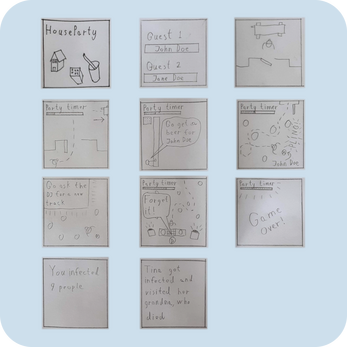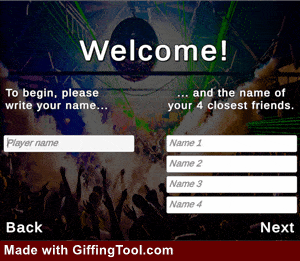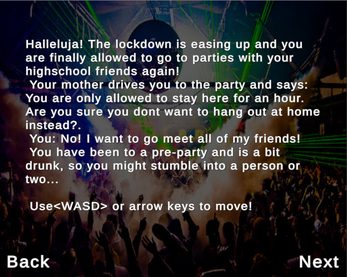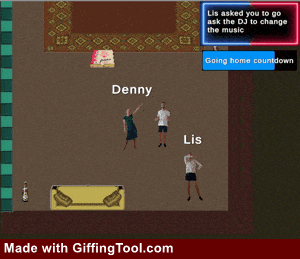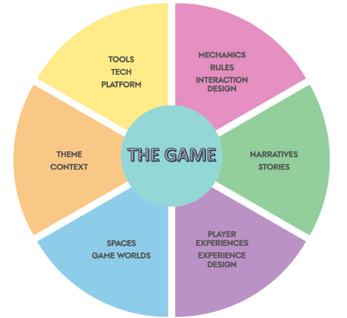
Party Fever
(Please have patience. The game is slow to load.)
🎉Welcome to PARTY FEVER🎉
It’s party time! Lockdown might still be in effect but that isn’t going to stop you, after all how much damage can you going to a small party alone really cause?
Game concept
Party Fever is a 2D top-down RPG adventure, made with the Unity game engine by the group Fabulous Five. The game features voice-acting, ethical choices through in-game decisions, as well as a realized game world. You play as a teenager who just got dropped off at a fun house party, and you’ve got about an hour (about 2 minutes in real time) to enjoy yourself. The actions you take will determine how the evening pans out, go around and solve problems for your friends, or don’t! The choice is yours!
PartyFever is made to be played multiple times, with the player getting a new experience each time they play through the game. Each subsequent play through will hopefully have the player acting differently, as they now operate based on a new pretense.
Game mechanics
The core game mechanics revolves around procedural rhetoric, as the game expresses its claims through rule based representations and interactions. The game seeks to enhance its procedural rhetoric by using two types of immersion.
Firstly in terms of character immersion, exemplified by the mechanic where the player is able to name themselves and their friends as seen on the first gif, where the names will then be used in game.
Secondly by narrative immersion with story dialogue both before and after the game with the start dialogue seen on the second gif but also through dialogue boxes during the game.
Furthermore agency is used to give the player the ability to make choices and see the result of their actions which enables them to have their own play style.
Game Design Canvas
Mechanics
The game gives the player agency with the freedom of choice throughout the game. Multiple endings are possible, and the result is up to the player to interpret. A game timer is included to give a temporal limitation of each game round and help create a frame for the experience.
Narratives
The start screen includes an introduction story to draw the player into the game and the end screen includes a story that changes based on the players action in the game with both stories "written" with the games stakeholder in mind. NPCs in the game has dialoque with relevant text to the players objective progression in the game.
The player can name its own character together with up to four of the main NPCs in the game. The end screen story uses the names the player has entered to make the dialouqe more immersive.
Experience design
The game makes use of procedural rhetorics, which becomes clear the second time you play the game. In the end of the game the player gets the results of their gameplay and a hidden mechanic is revealed.
Theme
The overarching theme for the game is the Covid-19 pandemic, but more specifically it focuses on the issue with teenagers seeing higher rates of infection (Park YJ, Choe YJ, Park O, Park SY, Kim YM, Kim J, et al.). Therefore the game context revolves around this issue and with the stakeholders being teenagers, the main focus of the game is not to "teach" but to hopefully incurage reflection about actions made by the player
Technology
The game has been developed using the Unity game engine through Unity's editor which has enabled to couple game logic, visuals and sounds to support the design choices made in the development process.
The itch.io platform has been used to distribute the game together with its design vision and relevant information
References
Park YJ, Choe YJ, Park O, Park SY, Kim YM, Kim J, et al. Contact tracing during coronavirus disease outbreak, South Korea, 2020. Emerg Infect Dis. 2020 Oct 14. https://doi.org/10.3201/eid2610.201315
The game was made by team Fabulous Five, during the summer course Game.Play.Design, which took place during the summer of 2020, in the middle of the COVID-19 outbreak.
| Status | Prototype |
| Platforms | HTML5 |
| Author | Fabulous Five |
| Genre | Educational, Simulation |
| Tags | 2D, Narrative, party, Short, Singleplayer, Top-Down, Unity |

